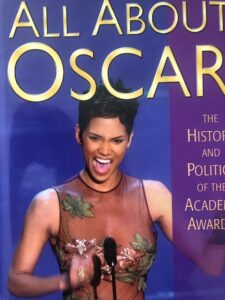Cary Grant is at his most suave (and paranoid) and Grace Kelly at her most stunningly beautiful and erotic (and suspicious) in Hitchcock’s To Catch a Thief, a romantic comedy-thriller.
It was lushly shot in the French Riviera, with some sequences in Cannes, where the internationally famous film festival takes place.
| To Catch a Thief | |
|---|---|

Original theatrical release poster
|
“To Catch a Thief” was the director’s first film (of five) using the VistaVision widescreen process, and the last of the three Hitchcock films starring Grace Kelly.
The film was the penultimate collaboration with Cary Grant; only North by Northwest (1959) followed. It is also about a man with a mistaken identity who goes on an adventure to prove his innocence.
To Catch a Thief is considered by most critics to be a fluffy, inconsequential film, but I think it’s an unfair assessment. Perhaps Hitchcock himself made a mistake by conceding to French journalists that that the picture was lightweight compared to his other works.
Grade: B- (***out of *****)
There’s plenty of pleasure and joy, not the least of which is its sleek and elegant look courtesy of the dazzling color topography of the Cote d’Azur by Robert Burks, which deservedly won the Best Cinematography Oscar.
To be fair, the mood of this piece is relaxed and the tone entertaining mood, but the charms and merits of the film go beyond the Riviera location. Deep down, like in every Hitchcock film, there is a tale that probes serous issues such as trust, romance and true love.
Mrs. Jessie Stevens (, who several years later would play Cary Grant’s mother in Hitchcock’s North By Northwest).
It takes about 20 minutes for Grace Kelly to appear in a sensuous scene on the beach, wearing a bathing suit and dark glasses, and another chapter for the coupe to meet and start arguing, bickering, and courting before realizing how deeply they have fallen in love with each other.
Cameo
Hitchcock makes his signature cameo, about 10 minutes into the film, as a bus passenger sitting next to Cary Grant. Sitting next to Grant on his other side is a woman with a birdcage, presaging Hitchcock’s “The Birds” (1963).
Despite Brigitte Auber’s character being referred to as a “girl” or “teenager,” compared to Grace Kelly’s young woman, Auber was actually 26, and more than a year and a half older than Kelly.
Crucial to the film’s success in shooting on location was the presence of unit production manager C.O. “Doc” Erickson.
The costumes were by Edith Head, including Kelly’s memorable gold lamé gown for the film’s costume ball.
The car driven by Grace Kelly was a metallic blue 1953 Sunbeam Alpine Mk I.
To Catch a Thief is the only Hitchcock film released by Paramount that is still owned and controlled by the company. The others were sold to Hitchcock in the early 1960s and are currently distributed by Universal Studios.
Made on a budget of $2.5 million, the movie was extremely popular at the box office, earning close to $9 million.
Oscar Nominations: 3
Cinematography (color): Robert Burks
Art Direction-Set Decoration (color): Hal Pereira and Joseph McMillan Johnson; Sam Comer and Arthur Krams
Costumes (color): Edith Head
Oscar Awards: 1
Cinematography
Oscar Context
Robert Burks shots 12 of Hitchcock’s 53 features, beginning with “Strangers on a Train” (1951), which was in black and white and for which he was also Oscar nominated, and including “Vertigo” and “The Birds.”
The Art Direction Oscar went to “Picnic,” and Costume Design to “Love Is a Many-Splendored Thing.”
Cast
John Robie (Cary Grant)
Frances Stevens (Grace Kelly)
Mrs. Jessie Stevens (Joyce Landis)
H.H. Hughson (John Williams)
Bertani (Charles Vanel)
Danielle Foussard (Brigitte Auber)
Foussard (Jean Martinelli)
Germaine (Georgette Anys)
Jean Hebey (Roland Lassafire)
Commissioner Lepic (Rene Blancard)
Credits:
Directed by Alfred Hitchcock
Screenplay: Michael Hayes, based on the novel by David Dodge
Camera: Robert Burks
Editor: George Tomasini
Music: Lyn Murray
Art Direction: Hal Pereira, Joseph Macmillan Johnson
F/X: John P. Fulton
Costumes: Edith Head
Release date: August 3, 1955
Running time 106 minutes











